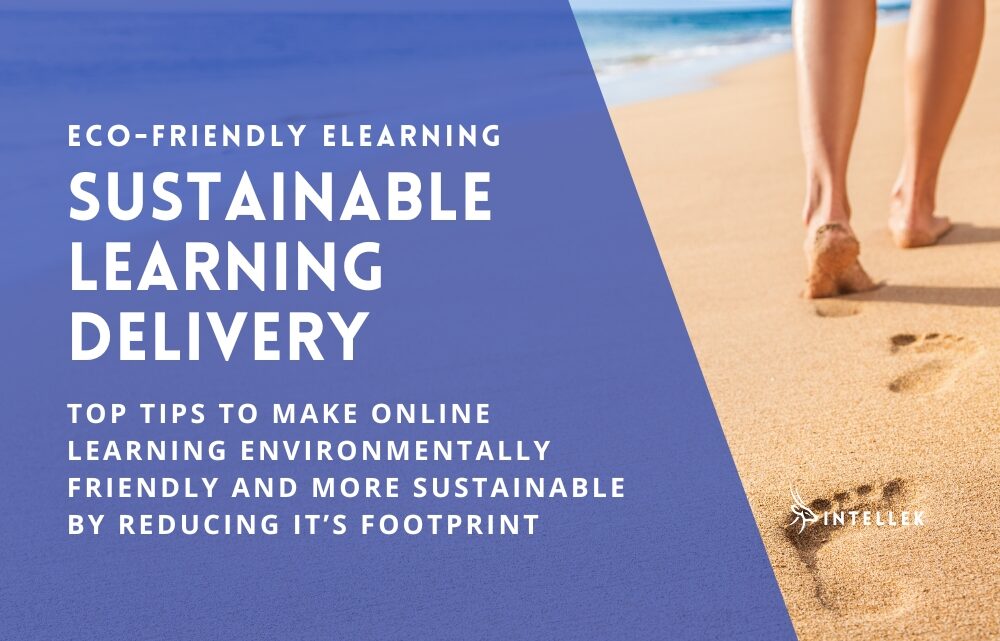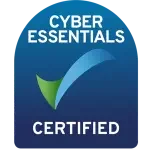
Greening your LMS is the key to delivering eco-friendly eLearning more sustainably, reducing the environmental impact of employee training, and supporting CSR strategies. Check out these top tips to help you on your way to more sustainable and environmentally friendly learning delivery.
This article will guide you through how to make online learning delivery sustainable and more environmentally friendly using simple, yet impactful steps that eLearning administrators can take to reduce their data usage and limit the energy consumed by their LMS – helping both the planet and your organization’s Corporate Social Responsibility (CSR) strategy.
IN THIS ARTICLE...
TL;DR? Watch the Video on Eco-Friendly eLearning
The Hidden Carbon Footprint of eLearning
Online learning is an essential tool in addressing environmental challenges in education. While data shows that online training is vastly less environmentally damaging than face-to-face training sessions, with online learning consuming an average of 85% less CO2 emissions than conventional in-person education. It is still important to recognize the environmental impact of delivering training online.
Did you know that data centers account for approximately 2% of the total electricity used in the USA[1]? A report by the BBC states that the amount of electricity used by data centers in the UK has risen by 400% since 2015[2]. The analysis also shows that in the Republic of Ireland, home to the European headquarters of several big tech firms such as Google and Facebook-parent Meta, data centers accounted for nearly a fifth of all electricity used in 2022[3].
That’s a significant carbon footprint, and as eLearning continues to increase in popularity, Learning Management System (LMS) administrators can play a vital role in reducing the environmental impact of cloud-based digital learning and making your eLearning more eco-friendly.
The environmental impact of eLearning isn’t always obvious. However, as the demand for online education grows, so does the volume of content stored and transferred online. Each piece of data – whether it’s an email, document, video, or image – requires storage, processing, and transmission, all of which consume energy and generate CO2 emissions.
1MB email emits the same CO2 as a 60-watt light bulb running for 25 minutes!
For every 1MB of data stored, 20 grams of CO2 is emitted[4]. That might not sound like much at first, but over time, storing emails, videos, images, and other eLearning materials can add up to a substantial carbon footprint. To put this in perspective, a 1MB email emits the same amount of CO2 during its lifecycle as a 60-watt incandescent light bulb left on for 25 minutes[5].
Here’s a simple breakdown:
- 1MB of data = 20 grams of CO2
- This means that large files like videos, images, and PDFs can significantly contribute to your eLearning platform’s carbon footprint.


What LMS Admins Can Do to Make eLearning Eco-Friendly
You don’t need to overhaul your entire system to make eco-friendly eLearning and have an impact by reducing the carbon footprint of your online learning. By auditing your current LMS and taking small, manageable steps, you can significantly reduce data storage and consumption – leading to a green digital campus for your organization and delivering eco-friendly education to your employees:
1. Audit and Remove Redundant Content
Conduct regular audits of your LMS to identify and remove outdated or unused content. Courses, learning paths, and eLearning content that are no longer relevant or duplicated files can be safely archived or deleted. This reduces the amount of data stored and the associated energy costs.
A content audit doesn’t just support sustainability goals; it also creates a more efficient, user-friendly experience for learners. With less outdated content to search through, they’ll spend less time finding the right training and more time benefiting from it. This win-win scenario improves both your platform’s environmental impact and its overall effectiveness as a learning tool.
2. Optimize Images for Reduced Data Load
Large images can take up a surprising amount of storage space. So firstly you should ensure you’re using an image that is appropriately sized for your purposes, there’s no point in uploading a 1080×1080 image if it’s only going to be visible as a thumbnail size in your eLearning.
Next, you should make sure you’ve optimized your image to have the smallest data footprint it can. Online image compression tools like Squoosh can help you compress images without loss of quality. Whenever possible, use the WebP format for online delivery. This modern image format is much smaller than traditional JPEG, PNG, and even GIF files, further reducing data load. Google’s developers have suggested that lossless WebP images can be up to 26% smaller than PNGs[6].
3. Compress Video Files for Efficient Streaming
Videos are some of the largest files typically found in an LMS. A tool like Handbrake allows you to easily compress video files. This impressive tool can bring several Gigabytes of video data down to a few hundred Megabytes with no perceivable loss in quality. Just drag and drop your video, and don’t forget to check the ‘Web Optimized’ box to ensure efficient streaming and reduced data usage. You could use FlexClip’s free video compressor for a simple and easy online alternative.
4. Save PDFs in a Web-Friendly Format
PDFs are often shared and stored within LMS platforms. When saving PDFs, choose settings that optimize them for online use, which results in smaller file sizes. Also, be wary of options that allow you to “Flatten” the file as this can often increase the storage space needed.
5. Link to Cloud-Hosted Files for Smaller Emails
Instead of attaching files and documents to emails, consider providing a link to cloud-hosted files. This approach minimizes the amount of data being sent via email and reduces the storage needed for copies of the same file across your wider network. This also eases the document updating process as you only need to update the online version and everybody with the link gets the latest updates.
How to Calculate Your LMS Environmental Impact
To truly make a difference with eco-friendly eLearning, it’s important to track your efforts and measure the environmental impact:
📊Benchmark Your Current LMS Storage Footprint
Start by calculating the CO2 emissions tied to your LMS storage. Using the formula 1MB = 20g CO2, you can estimate the carbon footprint of your current data usage.
📃Keep a Record of Changes Made
As you begin compressing files, removing redundant content, and optimizing media, maintain a record of these changes. Over time, this will allow you to see a noticeable reduction in storage and CO2 emissions.
📢Publish and Share Your Reduced Carbon Footprint
Once you’ve gathered sufficient data on your CO2 reductions, share your success of sustainability in online education with your organization. This can contribute to your company’s CSR strategy and demonstrate your commitment to sustainability.
A Greener Future for Eco-Friendly eLearning
Not only can online learning lower the cost of your training without sacrificing quality, and being a more sustainable training method – You can reduce your training platform’s environmental impact significantly by following these sustainable practices in eco-friendly eLearning, making small adjustments to how your LMS manages and stores data.
With the right tools and practices in place, LMS administrators can promote sustainability in online education through digital infrastructure and contribute to a more sustainable future for online learning, helping to reduce energy consumption and CO2 emissions in a digital-first world.
Sources:
- [1] Data Centers and Servers | Department of Energy
- [2] Data centre power use ‘to surge six-fold in 10 years’ – BBC News
- [3] Data centres use almost a fifth of electricity in Republic of Ireland in 2022 – BBC News
- [4] ‘MB>CO2’: Exposing the Internet’s Impact on the Environment (artshelp.com)
- [5] Do I emit CO2 when I surf the internet? – Energuide
- [6] WebP files explained | Google’s web image format | Adobe


Ricci Masero is an accomplished Chartered Marketer and content creator with over 25 years of experience in the field. Alongside marketing the award-winning blended learning solutions from Intellek, Ricci has been writing about technology and innovation for many years – his thought leadership has featured in Forbes, Entrepreneur, Alassian, and AI Journal – as an author, he is a regular contributor to eLearning Industry, Training Journal, and many other industry publications. He is also co-host of the L&D Insights segment in Intellek’s client webinars.





